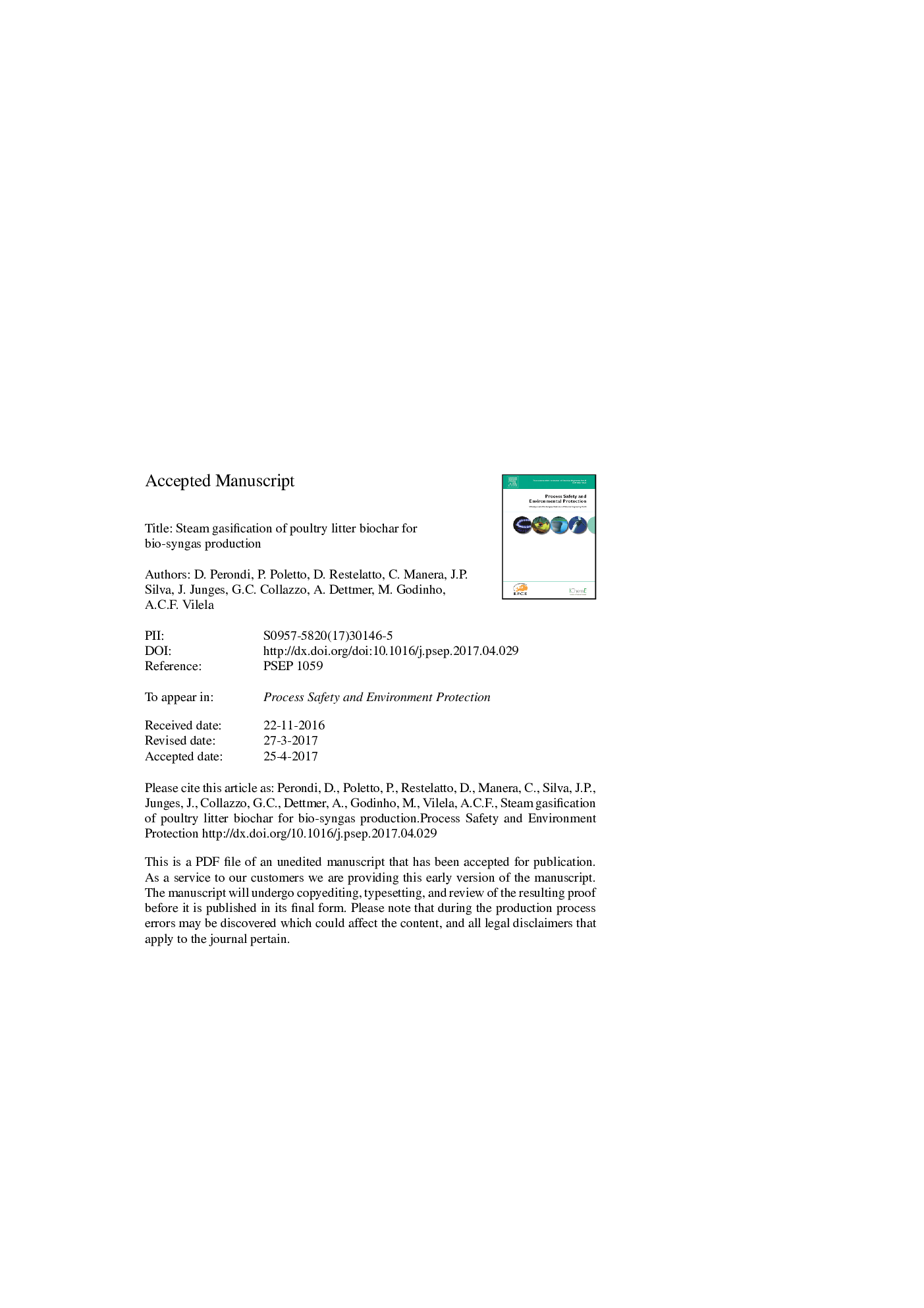| Article ID | Journal | Published Year | Pages | File Type |
|---|---|---|---|---|
| 4980829 | Process Safety and Environmental Protection | 2017 | 35 Pages |
Abstract
Poultry litter, the major waste generated by poultry farming, has its main use in soil as a fertilizer. However, the uncontrolled use of poultry litter for this purpose can result in environmental impacts such as the emission of methane, a greenhouse gas. Therefore, the thermochemical conversion of this waste can be a solution to this problem, since its products can be converted into useful energy. In this work, pyrolysis experiments were conducted in a tubular reactor, using N2 atmosphere and a final temperature of 800 °C. Furthermore, the steam gasification of poultry litter biochar obtained in the pyrolysis experiments was investigated in a fixed-bed tubular reactor at different temperatures (800, 850 and 900 °C). The maximum hydrogen (H2) reaction rates were observed in the first 15 min of the reaction, and there was a change in the maximum reaction rate towards lower reaction times with increased temperature. The elevated H2 yield may be associated with metals present in the biochar, especially potassium (K). Bio-syngas (H2 + CO) obtained from steam gasification of poultry litter biochar presented high potential to reduce iron ore by indirect reduction (IR) in blast furnaces (BF), or in direct reduced iron (DRI) processes.
Related Topics
Physical Sciences and Engineering
Chemical Engineering
Chemical Health and Safety
Authors
D. Perondi, P. Poletto, D. Restelatto, C. Manera, J.P. Silva, J. Junges, G.C. Collazzo, A. Dettmer, M. Godinho, A.C.F. Vilela,
